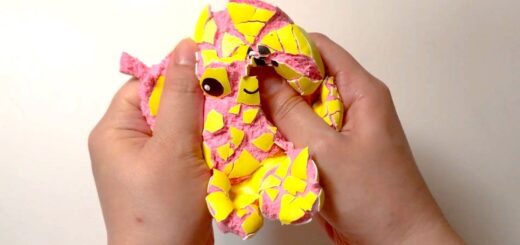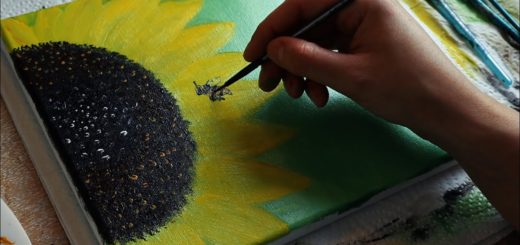South Korea’s Home Cafe Videos Are ASMR for the Soul
[ad_1]
At some point in the last few years, Instagram stopped being fun. There are too many ads; the glut of algorithmically sorted content grows ever unwieldier; the entire experience feels more like the scroll-to-completion task than frictionless leisure. But even in this digital void, there are things to look forward to: my favorite cutie dogs and cats, off-the-cuff Instagram Stories shared by friends. And, increasingly, the soothing comfort of home cafe videos, a burgeoning genre that comprises, as the name suggests, concocting cafe drinks — and occasionally food — at home.
A typical home cafe video might look something like this: floral ice cubes (ice spheres?) plink into an unusually beautiful glass, followed by berries or some other muddled fruit. As coffeehouse jazz piano — like the kind of tunes on this playlist — sets the mood, beakerfuls of colorful carbonated liquid are poured, one by one, into the vessel, creating a rainbow-ade so pretty and audibly fizzy that just watching the video is enough to soothe a parched throat.
Exchange the tall glass for a milk carton (or an elegant champagne flute, or even a glass inside a glass), the fruit and ice spheres for frozen pastel milk cubes, the seltzer for panna cotta cream or matcha cocoa or inky coffee or milk topped with whipped ube — you get the general idea. Set against sparsely or cutely decorated backgrounds, the creations are a perfect marriage of aesthetic, “ASMR-esque” sound, and mood, reimagining the ambient chill of a coffee shop for the home — and, more importantly, for the smartphone experience.
Home cafes arose as a primarily South Korean trend, discoverable on Instagram through the hashtags #homecafe or the Korean #홈카페, as Vice’s Bettina Makalintal reported early last year. In South Korea — like in neighboring Japan and, more recently, China — cafe culture looms large in urban cosmopolitan life, owing to multiple factors: the rise of a new middle class with disposable income and social aspirations; the desire for a third place outside of work and home; and the global influence of western giants like Starbucks. (A 2014 Quartz analysis found that, at the time, the South Korean capital of Seoul had more Starbucks locations than any other city in the world.)
In South Korea, where the youth unemployment rate has been steadily on the rise, there’s a disenchantment and frustration playing out among younger generations, who feel pressured to chase “big money and big success,” per the Korea Times. (Sound familiar, burnt-out millennials?) Amid this fatigue, a trendy concept has emerged: “small but certain happiness,” influenced in part by the Danish “hygge” and an essay by Japanese writer Haruki Murakami, “Afternoon in the Islets of Langerhans,” in which he describes the small happiness of “eating a freshly-baked loaf of bread with one’s hands, seeing neatly folded underwear in a drawer, wearing a new shirt that smells like clean cotton and letting a cat enter into a bed with a rustling sound,” Jin-hai Park writes for the Times.
Home cafes are one manifestation of that idea of “small but certain happiness,” Ju-young Park writes for the Korea Herald. In a world that emphasizes the importance of chasing success and promotions, earning more money, and climbing up the career ladder into infinite heights, there’s comfort in pouring a single cup of beauty — and comfort in watching it be poured, too.
Winter, cold and solitary, would be the indisputable worst season, if not for the glow of the holidays. Temperatures fall; the short days are half-cast in a darkness that smothers. If lucky, you can spin that depressing reality into “coziness” — if we’re confined within the shadows of an enclosed space, might as well bundle up, brew a hot drink, and huddle close to the wamrth of a fire.
Watching home cafe videos is the digital analogue of that, the equivalent of shining a sun lamp onto the wilted remains of my brain. For the span of three to 60 seconds, I watch a beautiful latte materialize, and I feel the warmth of that winter fire. It’s the same sensation I get reading a Murakami novel — observing an unnamed protagonist putter around in his kitchen while listening to some jazz record — or casting off the final stitch of a hand-knitted scarf, or pulling a cake out of the oven right before the golden hue darkens to brown.
I’ve begun baking more, lately, driven by the desire to create something tangible with my hands — pure alchemy, transforming raw ingredients into beautiful, delicious foodstuff. In the past year: apple cinnamon cakes, flaky strawberry shortcakes, a lemon cake so fragrant I can still smell it, the worst pound cake in the world, cardamom sugar cookies with freshly ground spices, dozens upon dozens of perfect brown-butter chocolate chip cookies that I finally got to stop spreading so much in the oven. I follow these recipes, press pause on life, and sink into the fantasy of opening my own cafe-bakery in some small, fictional town paved with cobblestones. In this alternate world, restaurant margins aren’t so paper-thin as to render a dream impossible; I greet all my neighbors and customers by name; I arrange baskets of bread and pour lattes etched with foamy, heart-shaped buds.
This idyll is just that: an Arcadia. But this fantasy, like home cafes, are a rare, soothing pleasure in a world increasingly plagued by ugly realities. Much is bad, it’s true. So I’ll take the tiny comforts that I can, the snatches of warmth in the chill. These small but certain happinesses.
[ad_2]
Source by [author_name]














